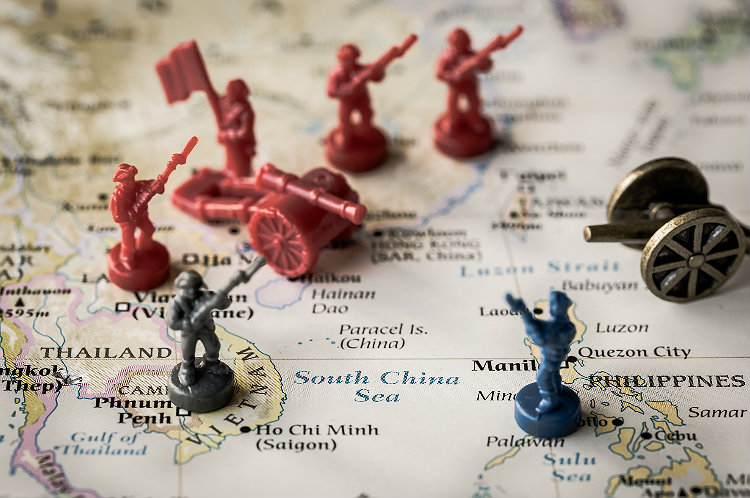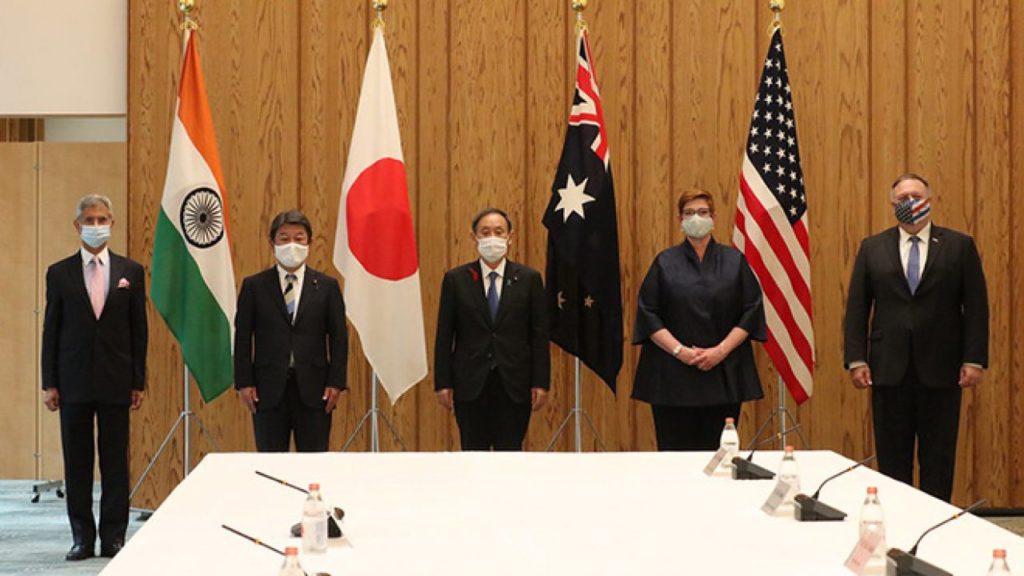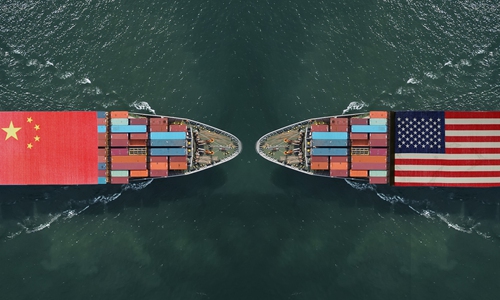The designs of great power politics have started revolving around Washington-Beijing strategic competition where American state officials have translated the Chinese economic rise as a potential threat to Washington’s global standing. The American perception of perceiving China as a potential threat is inherited in Washington’s global geostrategic interests, which instructs all US state authorities to counter the rise of counterbalancing forces around the globe efficiently. This is widely observed to be a reaction to Beijing’s global aspirations for creating an international network of trade routes. In 2013, under the leadership of President Xi Jinping, the Chinese government announced the historical mega trading project in the form of One Belt One Road (OBOR), which was later renamed as Belt and Road Initiative (BRI). President Xi Jinping’s plans of OBOR or BRI conveyed the Chinese visualization of world politics structured on geo-economic patterns. It became unignorably a critical development in world politics containing substantial potential for undermining American position in the international system. Framed in another way, Washington measured it as a serious threat to the American position in the international system because Chinese plans of infrastructural developments through trading routes were seen as Beijing’s vision of creating a worldwide economic order. Under Xi Jinping’s idea of formulating a China-sponsored worldwide system of intercontinental economic connectivity across the globe, the Chinese launched their bilateral and multilateral economic collaborative projects in the world.
The Chinese vision of global economic connectivity alarmed the US government and forced it to articulate appropriate counter measures against Beijing’s global emergence. An intense engagement of leading US officials under different political leaderships attempted to contain and combat China’s economic rise in world politics. The recently passed Strategic Competition Act 2021 is evidence of America’s comprehensive strategy for countering Beijing’s emerging role in the world. The Senate Foreign Relation Committee approved the Strategic Competition Act 2021 on April 21, 2021, to define the American strategic approach towards China’s global outreach. The creation of intense economic engagement with states located in various regions is the fundamental aim of the BRI, and has led Beijing towards different levels of trading collaboration with its economic partners. While keeping in view Beijing’s aim of cultivating a widespread network of economic partners and political allies in the world, the Act of the US Senate tried to address the issues related to China’s economic rise and its strategic implications for the US in different sections covering the topics of diplomatic strategy, military deployment, competition values, and political attributes of countering China’s international economic behaviour. After briefly mentioning the nature of Chinese global outreach in the form of its increasing trading influence in Asia and beyond, American officials observed the People’s Republic of China (PRC) as a global competitor of the US, based on Beijing’s approach for securing multidimensional extents of power. In this initial section, the Act 2021 explains the PRC’s political, diplomatic, economic, military, technology, and ideological domains of powers which could undermine the US ability to secure its national interests in the world. The central part of the Senate legislation covers different formats rationalizing the American way of visualizing China in 281 pages.
The debate in the main section of the Senate Legislation Act of 2021 is an effort to draw Washington’s attention towards potential future challenges. It is formally considered a legislative measure for planning an America’s comprehensive response to the competitive future originating from China. In this Bill US officials cited China as a serious threat in four key areas i.e. science and technology, global infrastructure development, digital technology and connectivity, and the ideological role of the Chinese Communist Party. The reaction to China specific challenges, in the legislative document, outlined few objectives of the US global policy against the PRC’s strategically competing behaviour. The document mentioned eight policy objectives generally focusing on the global standing of the United States and its multilayered strategic competition with PRC, which are the balance of power in the Indo-Pacific regions and position of US allies in the same region, the PRC’s status in the Asia Pacific region, the US aim of establishing free and open international order, and the key rules, norms and standards of international engagement in the 21st century. Based on specific objectives and potential challenges as stated in the document, a twenty-one points statement is outlined in the Beijing-specific strategic Act of the US Senate. The persuasion of a strategy for containing the increasing influence of the Chinese Communist Party on free societies are designed under the Countering China Communist Party Malign Influence Act. The Malign Influence Act authorized a funding of $300,000,000 for each fiscal year 2022 through 2026 in the form of Countering Chinese Influence Fund. The fund is designated to contain and counter the growing influences of the Chinese Communist Party globally.

Refereeing to the ongoing war of covert activities consisting of different propaganda and disinformation campaigns between the US and China, the Legislative Act treated China as a serious problem in the age of 5th generation warfare. The formal document of the Act accepted Beijing’s increasing spending on public diplomacy through continuing state-sponsored media publications outside China, which has resulted in around $10,000,000,000 for Beijing’s foreign direct investment in the communication infrastructure. The critical examination of China’s growing international role in the legislative document of the Act 2021 suggests some improvements in the performance of the United States Agency for Global Media (USAGM). For the same purpose, Congress highlighted the establishment of a Global Engagement Center against the rising Chinese popularity in the mainstream global media at different levels. To demonstrate an influential American role in the Indo-Pacific region, the official document describes the Indo-Pacific region as an essential region of 36 countries, and its surrounding waterways the prime responsibility of the US Indo-Pacific Command. The Act 2021 necessitates an active engagement of the entire legislative branch of the US to rationally consider China as the most significant geopolitical and geo-economic challenge for the US foreign policy in the Pacific region. It is suggested in the Act that the US government needs to pay substantial attention towards ensuring and protecting US hegemonic status in the Pacific region. The debate on the politics of the Pacific region further said, the “US must sustain resourcing for a Pacific Deterrence Initiative, which shall be aligned with the overarching political and diplomatic objectives articulated in the Asian Reassurance Initiative Act (Public Law 115-409), and must prioritize the military investments necessary to achieve United States political objectives in the Pacific region”. The Pacific Deterrence Initiative is Pentagon’s plan for allocating a high budget to strengthen American military abilities in defending major US allies and US interests against the PRC. The Department of Defense Budget issued a complete plan of investing in the Indo-Pacific region for the Fiscal Year 2020 from the Office of the Under Secretary of Defense (Comptroller). Moreover, the Asian Reassurance Initiative Act passed by the 115th Congress under the Trump administration in 2018 briefly outlined the US policy for the Pacific region. This Act has three areas of concentration under specific titles, and each title discussed specific directions of US foreign policy for the Indo-Pacific region. These titles are “Promoting United States Security Interests in the Indo-Pacific Region,” “Promoting United States Economic Interests in the Indo Pacific Region,” and “Promoting United States Values in the Indo-Pacific Region.”
The Strategic Competition Act 2021 connected the future of the US role in world politics to the status of its allies and their supportive approach to American leadership. The document emphasizes the policies of investing in alliances and partnerships in strategic and diplomatic matters for the Indo-Pacific nations. To enhance American position among the group of Pacific allies, the United States has adopted an actively participating approach for various multilateral initiatives such as QUAD and ASEAN and APEC. QUAD is the recent development that placed Australia, India, and Japan under the US leadership to counter the Chinese position in the Western Pacific Ocean generally and the South China Sea specifically. The QUAD is quadrilateral cooperation structured on a shared vision of four strategic allies against the potential regional challenges. The China-specific Act suggests the enrichment and extension of existing cooperative avenues with the core strategic partners under QUAD. So, the Act recommended deepening multidimensional collaborations in the fields of diplomacy, economy, and security with Tokyo, Seoul, Manila, Bangkok, and Canberra. The competitiveness bill explained the US policy for the ASEAN region, which is primarily designed to stand with ASEAN nations through various economic engagements. The policy for the South East Asian counties has recently resulted in various supportive initiatives such as the Mekong-United States partnership, the United States-ASEAN 20 Smart Cities Partnership, the ASEAN Policy Implementation Project, the United States-ASEAN Innovation Circle, and the United States-ASEAN Health Futures. In the presence of an overwhelming wave of technological advancement and scientific innovation, the Act 2021 suggested that Washington collaborate with ASEAN nations to screen significant Chinese investments in the domains of strategic technology and critical infrastructure.
An interesting part of the bill starts from discussing the increasing influence of China and its ruling political party on different inter-governmental formats of various international organizations. The document listed forty organizations as witnessing the emerging Chinese influence in the world and treated it as an actual threat to the US. The arguments on the recent international health crisis marked it a global health emergency with its Chinese origin. Referring to the World Health Organization (WHO) initial findings, the American officials believe that they have the right to investigate and gather the essential data relevant to the outbreak of coronavirus. Another major point in the report regarding the Chinese role in the United Nations System clearly mentioned the aim of American engagement in the United Nations (UN) with an exclusive emphasis on American interests. In addition to imagining China as a competing power in the intergovernmental framework of the UN and as an alleged originator of coronavirus in the world, the subsequent parts of the bill endeavoured to cover every possible dimension of a Chinese threat to the US and its impacts on American global standing generally, and in Asia Pacific region specifically.
In short, the legislative documents discussing the Chinese global economic rise and its negative impacts on American standing in the world discussed the US position in the different areas of conflict with China. The facts and figures covered in various arguments in the document framed Beijing as a gravitational point of American foreign relations in the contemporary world. The whole document treated China as an influential adversary that cannot be negotiated on any term because the policy responses in the document discouraged a peaceful resolution of the conflicted areas between China and the US. The policy responses in the legislative act clearly communicated to the world the level of American antipathy towards China and the aggressive role of leading US officials for their Chinese counterparts. Furthermore, the draft of the bill mainly discussed a multidimensional anti-Chinese approach that focuses on containing and weakening China instead of engaging it in some productive, peaceful dimension. In addition to adopting a less-peaceful and more-competitive approach, the Act 2021 tried to address various threats linked to China’s global rise without sincerely focusing on specific rational issues with Beijing.

The Strategic Competition Act 2021 is a brief outline of American China-specific policy and its various rationales intended to benefit Washington in the short run. Without having a long term solution to the Chinese problem, the negative US visualization of China as a strategic competitor and a potential threat will intensify the existing patterns of great power politics in the international system. The China-specific strategic reorientation of the American foreign policy is an offensive move that will leave negative impacts on China and propel Beijing to take counterbalancing measures. The Act 2021, designed by US Senate Committee on Foreign Relations, ignored the significance of peaceful approaches towards Beijing and took an aggressively hostile stance for China. The broader framework of the bill highlighted Chinese position on various issues of global concern through quoting different misleading facts and figures. Based on the bill’s antagonistic and unfriendly tone, it can easily be maintained that the legislative measure of the US government is fundamentally carrying a containing, combative, and confrontational behaviour of Washington. So, the adaptation of a formally competitive approach will not create a conducive environment to better the hostile bilateral relations between Washington and Beijing. The international community has started translating the Strategic Competition Act as the beginning of a new confrontation between two great powers. It is also considered an end of the thinly existing cooperative design of bilateral interaction between China and the US. Such a confrontational level between the great powers rarely supports the secure and stable developments in world politics, which will witness an updated confrontational pattern between two strategic competitors, Washington and Beijing.





